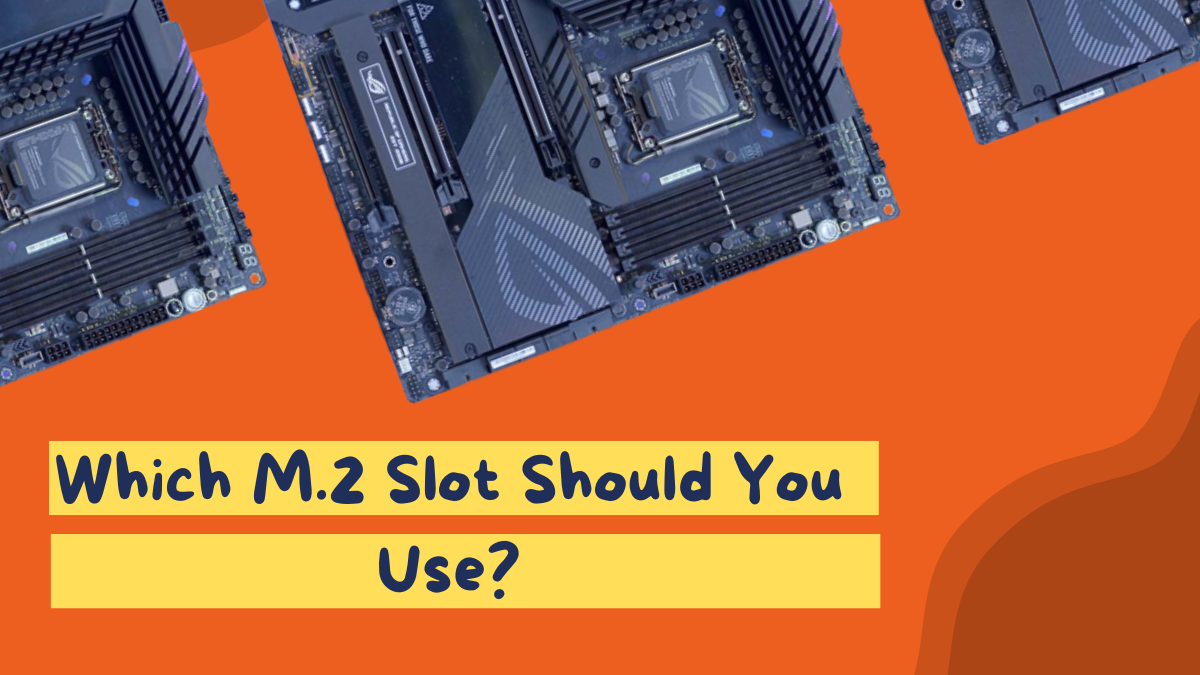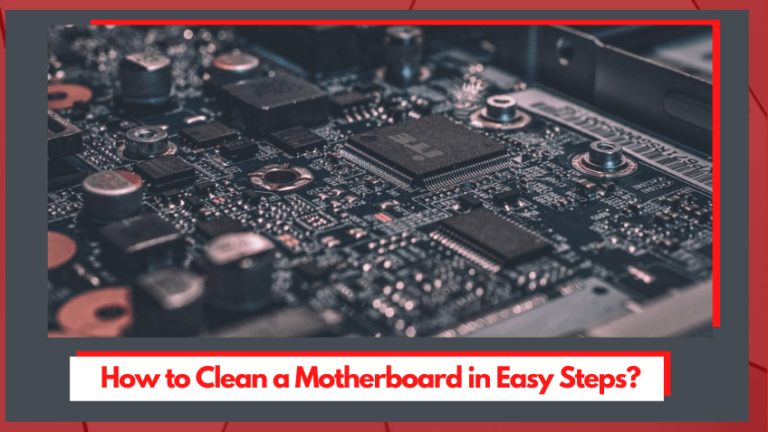Which M.2 Slot to Use? [Find Out in 2 Minutes]


So, you got your M.2 SSD and opened your PC case to install it, but you need help finding out which M.2 slot to use. Which M.2 slot should you prefer?
In simple words, use the M.2 slot that matches the capabilities of your M.2 SSD. For instance, if you have an M.2 SATA SSD, install it in the M.2 SATA slot. But if you have an M.2 NVMe SSD, put it into the M.2 NVMe slot on your motherboard.
Keep on reading to learn:
- Which M.2 slot to use on your motherboard;
- Does it matter which M.2 slot you use?;
- How to use multiple M.2 slots;
- Basics of an M.2 SSD.
We also have a detailed FAQ section to answer burning questions on M.2 slots. Let’s roll in.
Which M.2 Slot Should You Use?
If your motherboard has multiple M.2 slots, use the one that supports the maximum read and write speeds of your M.2 SSD.
To determine the features and speed limits of M.2 slots, check your motherboard’s storage specs on the Internet.
If your motherboard has multiple M.2 slots, it should fall under one of two cases:
Case 1: One of its M.2 slots has NVMe PCIe bandwidth, while others have SATA bandwidth.
(Say your motherboard falls within this category and you have an NVMe M.2 SSD, it’s preferable to use an NVMe M.2 slot for maximum storage performance.)
Case 2: Its M.2 slots use SATA bandwidth only and don’t support NVMe bandwidth.
(If it’s the case for your motherboard, it doesn’t matter which M.2 slot you use, as all are limited to SATA bandwidth.)
The First M.2 Slot is Preferable
Generally speaking, the top M.2 slot on the motherboard is faster, as it’s connected to the PCIe lanes through the CPU. Whereas the second slot may be connected through PCIe chipset lanes.
So, using the first (or the top) M.2 slot on your motherboard is preferable for maximum data transfer speeds.
Also, the top M.2 slot usually provides the best airflow to your M.2 drive, ensuring it doesn’t heat up and gives a consistent performance. The following slots tend to have poor airflow as they’re covered under the GPU.
Wondering why the top M.2 slot tends to be faster? Watch the video below!
Also, check out our guide on PCIe slots and their uses to learn about these expansion slots in detail.
Checking Specs of Your Motherboard
As mentioned above, you can determine the features of your motherboard’s M.2 slots by checking its storage specifications.
You can use its user manual or spec sheet to do so. But a more convenient solution is to search for your motherboard’s model followed by “specs” or “specifications” on Google.
Next, open one or two links and navigate to storage specs to see details of your motherboard’s M.2 slots. Below is a quick example:
1. I searched for “asus rog strix b550-f specs” on Google.
2. I opened the first page.
3. I clicked on Tech Specs.
4. Lastly, I scrolled down to Storage to see storage details of the motherboard.
As in the above image, you can see which storage standards (PCIe or SATA) and their versions (i.e., PCIe 3.0 or PCIe 4.0) are supported by individual M.2 slots.
Does It Matter Which M.2 Slots I Use?
Yes, the M.2 slot you use will impact the performance of your M.2 SSD and thus your productivity and user experience.
Installing a fast-speed SSD (like M.2 NVMe) in a low-speed M.2 slot (like M.2 SATA) will limit your SSD’s speed according to the slot’s bandwidth.
So, before installing an M.2 SSD on your motherboard, determine the following things:
- The speeds of individual M.2 slots on your motherboard.
- The type of SSD you want to use (NVMe or SATA).
Once you know these details, install your M.2 SSD in the right M.2 slot for maximum performance.
How To Use Multiple M.2 Slots
If your motherboard has multiple M.2 slots, use the ones that support NVMe first for maximum performance.
Consider using the M.2 SATA slots only if you’ve used all M.2 NVMe slots. That said, if your motherboard only supports M.2 SATA slots, use whichever one you like.
But note that certain M.2 SATA slots disable their respective SATA connector. You can find these details on your motherboard specifications page as well.
What to Do If There Are No M.2 Slot on Your Motherboard?
If your motherboard lacks M.2 slots, the only way to connect M.2 SSDs to your motherboard is through an M.2 PCIe adapter. It’s an expansion card that goes into a spare PCIe slot on your motherboard and adds M.2 slots.
But if you use an M.2 PCIe adapter, the speed of your M.2 SSD will depend on the following:
- The PCIe version of the PCIe slot on your motherboard.
- The PCIe version of the expansion card.
If your motherboard supports PCIe 3.0, but the expansion card is limited to PCIe 2.0, you can only enjoy the performance of PCIe 2.0 standard. For reference, this interface limits read/write speed to 500MB/s, even worse than SATA.
Check out our guide on the best PCIe 4.0 motherboards to ensure you get the fastest data transfer speeds from PCIe lanes.
Exploring the Basics: What’s an M.2 SSD?
SSDs are of different types, including SATA and PCIe/NVMe SSDs. M.2 is a form factor SSDs come in and is an alternative to the traditional 2.5-inch form factor.
So, M.2 SSDs come in the M.2 form factor, which is small (usually the size of a flash drive).
Again, both SATA and NVMe/PCIe interfaces can be M.2 SSDs. If it’s a SATA SSD, it’ll be termed M.2 SATA SSD. But if it’s the latter, it’ll be called M.2 PCIe/NVMe SSD.
SATA is an old-school storage drive interface with a data transfer speed limited to ~550 MB/s (Max).
It’s more than traditional HDD drives (replaced by SSDs) but much less than PCIe NVMe SSDs. For instance, M.2 PCIe NVMe SSDs provide up to 3500 MB/s or higher data transfer speeds.
Here’s an overview of the data transfer speeds of different types of storage drives:
| Storage Type | Read Speeds |
| 3.5-inch SATA HDD | ~120-200 MB/s (Max) |
| 2.5-inch SATA HDD | ~80-160 MB/s (Max) |
| 2.5-inch SATA SSD | ~550 MB/s (Max) |
| M.2 SATA SSD | ~550 MB/s (Max) |
| M.2 PCIe/NVMe SSD (PCIe 3.0) | ~3500 MB/s (Max) |
| M.2 PCIe/NVMe SSD (PCIe 4.0) | ~7000 MB/s (Max) |
Want to learn about M.2 in detail? Watch the video below:
FAQs on Which M.2 SSDs to Use
The M.2 slots that support PCIe 4.0 standard are the fastest. PCIe 4.0 is the latest PCIe interface and provides up to 64GB/s bandwidth. It’s double the bandwidth of the recent PCIe generation (32GB/s), PCIe 3.0.
No, M.2 and NVMe are not the same. M.2 refers to the form factor or design of an SSD. Whereas NVMe is a storage technology that connects an SSD to the motherboard. It uses PCIe lanes to provide fast data transfer between the motherboard and the SSD.
No, all M.2 slots are not the same in most cases. Most motherboards have a mix of PCIe and SATA M.2 slots to support both types of M.2 drives. Whereas some M.2 slots support both PCIe and SATA M.2 drives.
Still, there’s usually a difference between the PCIe version. Some M.2 slots run on PCIe 4.0, whereas others use the PCIe 3.0 version.
We recommend installing your SSD into a compatible M.2 slot with the same capabilities. For instance, use an M.2 NVMe slot for an M.2 NVMe drive and an M.2 SATA slot for an M.2 SATA drive.
A standard M.2 SATA drive is many times slower than an M.2 PCIe drive. M.2 SATA drives have a maximum data transfer speed of 550 MB/s. Whereas PCIe 3.0 and PCIe 4.0 versions of M.2 PCIe drives support 3500 MB/s and 7000 MB/s speeds, respectively. So, PCIe drives are faster than M.2 SATA drives.
Key Takeaways
Here are the most important takeaways on which M.2 slot to use:
- A general rule is to use the M.2 slot with maximum data transfer speed. Since PCIe/NVMe M.2 slots are faster than SATA M.2 slots, they’re preferable.
- Check the specs of your motherboard to see the features and capacities of its individual M.2 slots.
- If you wish to use multiple M.2 slots on your motherboard, start with the first (top) one, as it tends to be the fastest.
- If there’s no M.2 slot on your motherboard, use a PCIe M.2 adapter to connect M.2 slots to your motherboard. Or, check out our guide on the best M.2 motherboards and find a good one.
Ever wondered why your motherboard shows orange light from time to time? Check out our guide on how to fix the orange light on the motherboard to find out.
![Do Motherboards Come With Wi-Fi? [Detailed Guide]](https://motherboardtimes.com/wp-content/uploads/2022/01/do-motherboards-come-with-wifi-1-768x512.jpg)
![Are Motherboard Standoffs Necessary? [Don’t Be Mistaken!]](https://motherboardtimes.com/wp-content/uploads/2021/12/Are-Motherboard-Standoffs-Necessary-768x432.jpg)

![How Much is a New Motherboard in 2024? [Revealed With Data]](https://motherboardtimes.com/wp-content/uploads/2022/08/how-much-is-a-new-motherboard-768x432.png)
![What is AMD Fuel.service.exe [Uses + How to Remove It]](https://motherboardtimes.com/wp-content/uploads/2022/01/what-is-amd-fuel-service-768x432.png)
